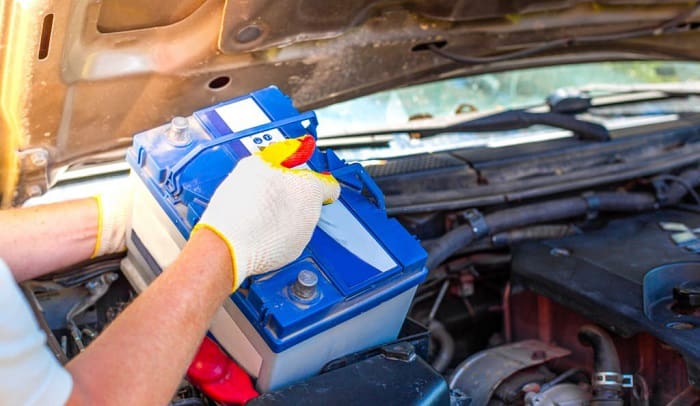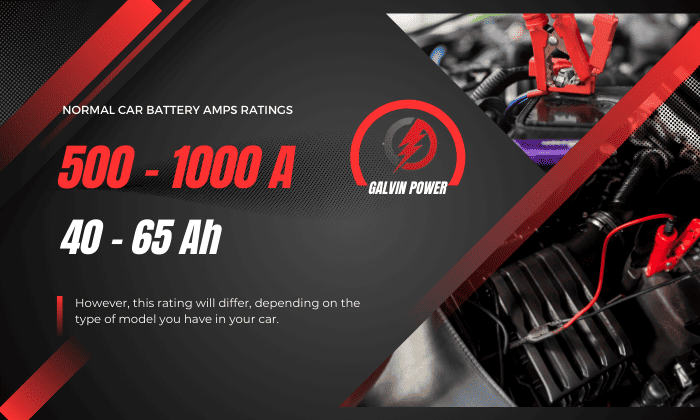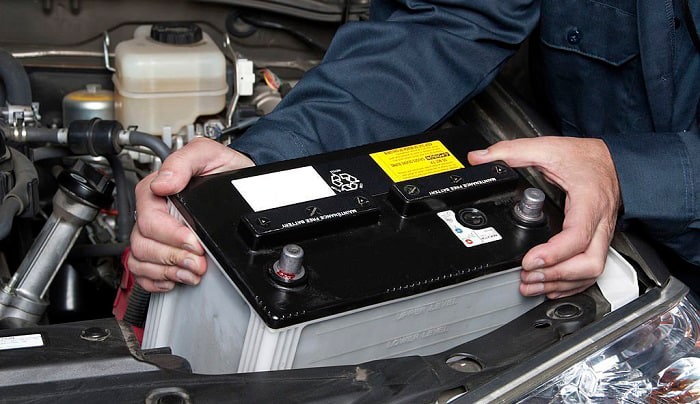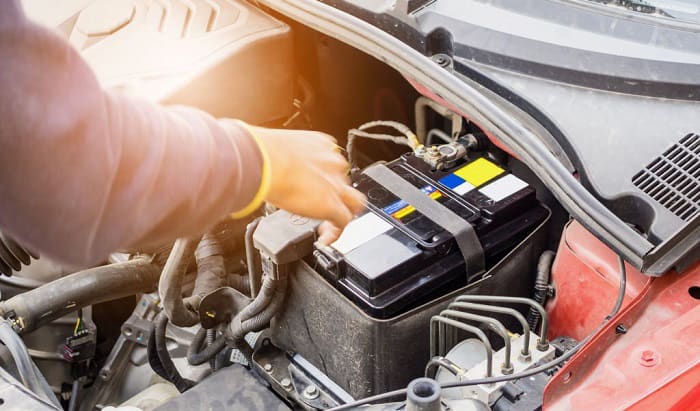A battery is essential for cranking an engine and energizing various electronic components inside and outside your automobile. With that in mind, you might wonder how many amp does a car battery have.
In reality, there is no simple answer to this question. However, in most cases, 550 to 1000 amps and 40 to 65 Amp Hours are the ratings you will see. If you want to understand the significance of these estimates, reading this entire article might be helpful.
Table of Contents
How Much Amp Does a Car Battery Provide?
The amperage of a car battery is the total amount of current it can provide. Most products indicate this rating on their label as it is one of their important specs.
As mentioned above, the normal amps for car battery use are 500 to 1000 amps. However, this rating will differ, depending on the type of model you have in your car.
Using the amp hours rating divided by current loads per hour, you can identify how long your battery will last. For example, if you have a 100 Ah battery and a load of 5 amps per hour, your battery will last up to 20 hours before it drains.
As you can see, discharge loads are a big factor in battery drains. If you look at an amperage chart online, you can see that the higher discharge, the quicker the battery gets drained.
In the 100 Ah example above, if you use 50 amps of loads per hour instead of 5 amps, your battery will only last for 120 minutes.
Furthermore, the amp hours of a battery are not always consistent. There are factors that can reduce the battery’s capacity, which we will explore below.
Factors that can Decrease Battery Capacity
- Age
Usually, as the battery gets old, its health also decreases, which is why the amp hours decline. This fact is why some old batteries easily drain.
- Temperature
Normally, moderately warm temperatures ensure the highest efficiency.
Under cold temperatures, the battery capacity slightly decreases, which is why during winter, its power may not be enough to energize the electrical components of your car.
FAQs
What is the Battery Reserve Capacity?
A battery reserve capacity, often known as RC, is a time measurement that describes how long a 12V battery can support a 25 amp load before being drained to 10.5V.
Typically, the higher the reserve capacity, the longer you can use it. This RC rating is just as significant as the CCA (Cold Cranking Amps) rating, which you should consider when selecting a new battery.
What is the Ampere Rating of a Car Battery?
The ampere rating is the current capacity of a battery, which is rated chiefly from 550 to 1,000 amps.
This rating is not the same as the amp-hour in a 12 volt car battery label. In short, amp-hour combines the duration we use a battery with the amount of current discharged in one hour.
Aside from these terms, you should also know the following:
- Cranking Amps – or CA is the amount of current that a fully charged battery can produce for 30 seconds without a voltage decrease. Moreover, there is also a Cold Cranking Amps (CCA) rating, which is higher than a normal CA and important to consider when you need to start a car engine in cold areas.
- PulseHot Cranking Amps – (PHCA) is the maximum amount of current that a battery can generate for 5 seconds after starting up.
- Maximum Charging Current – is the maximum amount of current a battery can receive for recharging.
How Do You Measure Car Battery Amps?
Measuring the amps of a battery will tell you whether it is functional or needs replacement. However, to test car battery amps with multimeter, you must first understand Ohm’s law and determine the battery voltage.
- So, to check car battery amps, connect a multimeter to the battery and note down the voltage reading (make sure the red probe goes to the positive terminal and the black probe to the negative one).
- Next, you can divide the voltage by the ohm rating to find the amperage.
If you think getting the amps and volts is a bit complicated, there is a much easier way to identify your car battery amp. Determine the battery charge level or the State of Charge (SOC) to know how to tell its amp rating.
For this method, you only need to check how many volts the battery is. A reading of 12.6v and above means the battery SOC is at 100%, 12.4V is 75%, 12.2V is 50%, 12V is 25%, and anything less than 11.9V is considered a flat or dead battery.
For example, a 12.2V measurement indicates that your battery is 50% charged. In this scenario, if your battery’s total amp capacity is 800 amps, it is now only 400 amps.
How Many Amps to Charge a Car Battery?
Typically, 2 amps will work fine, though you can go for a car battery charger with a higher rating, up to 10 amps and even more. In any case, make sure to pick a full battery charger with protection against overcharging and other faults.
Conclusion
Knowing how many amp does a car battery have will help you determine how efficient it is. Moreover, it is also helpful to figure out when you should charge your battery or replace it if necessary.
If you’re having a problem with your car power source, don’t just throw it away. You can use a pulse repair charger to fix it or call your best mechanic to verify the problem.

I am Edwin Jones, in charge of designing content for Galvinpower. I aspire to use my experiences in marketing to create reliable and necessary information to help our readers. It has been fun to work with Andrew and apply his incredible knowledge to our content.




